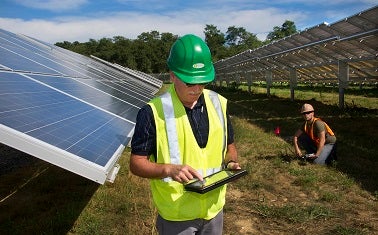(This post originally appeared on Resources for the Future’s Expert Forum on EPA’s Clean Power Plan, on October 24, 2014)
Should EPA credit early action taken by states to reduce carbon emissions? If so, how?
Under the Clean Power Plan, the United States will finally have Clean Air Act standards to address carbon pollution from existing power plants. During the long wait for these standards, a diverse group of states and companies have acted, leading the way in reducing carbon pollution. They have done so by deploying renewable energy, harvesting demand-side energy efficiency, and by shifting utilization away from high-emitting and toward lower-emitting power plants.
State and private sector leadership in addressing pollution is something that should be recognized and supported. Action at the federal level to address climate-destabilizing pollution is lagging perilously far behind the scope and pace of action that scientists tell us is necessary to mitigate harmful climate impacts and reduce the risk of catastrophic climate change. For these reasons, we have long supported the recognition of early action in the context of the Clean Power Plan. Yet the question of how to do so is complex.
Under Section 111(d), EPA identifies the “best system of emission reduction” available to address dangerous air pollution from stationary sources, and sets emissions performance targets achievable using that best system. This framework—like other frameworks under the Clean Air Act—looks at existing pollution problems and how they can be addressed going forward. It does not provide for an assessment of past emissions reductions by those sources (or that state).
Of course, under the Clean Power Plan, states and companies that have already transitioned toward lower-carbon and zero-carbon energy and energy efficiency are closer to the full deployment of the best system of emissions reduction than others—and EPA should consider clarifying that states that go beyond their targets under the Clean Power Plan would receive credit for those actions under future updating of the carbon pollution standards for power plants.
The years between 2012 and 2020 present a distinct quandary. EPA uses 2012 data on power sector infrastructure in assessing the potential for emissions reductions to be secured under the best system during the 2020 to 2029 compliance period. Crediting emissions reductions secured between 2012 and 2020 would encourage states and companies to act earlier, moving emissions reductions forward in time. All else being equal, earlier action to reduce emissions is certainly better than later action. But the potential to reduce carbon pollution during 2012 to 2020 was not taken into account in setting the state targets. As such, giving compliance credit to those actions taken during this time that would have happened regardless of the Clean Power Plan—take, for example, renewable energy deployed under a renewable energy standard in a state strongly committed to clean energy—would create a bank of compliance credits. Those banked credits would be used by that state during the compliance period in the place of other, beyond business-as-usual actions to reduce emissions—and the overall emissions reductions achieved by the Clean Power Plan would be reduced by the same amount.
There are, of course, highly compelling reasons to begin to take action now to reduce carbon pollution. States and companies can take advantage of the five years between the finalization of the standards and the beginning of the compliance period to gradually build out renewable generation and build up energy efficiency programs so that these resources are ready to deliver carbon reductions. The reductions in co-pollutants that will result will help states deliver cleaner air for their citizens and meet other clean air standards. Companies can develop business models built on a foundation of clean energy and efficiency, and investments in cleaner energy and efficiency will create jobs. Improvements in energy efficiency will cut utility bills for homes and businesses, and spending those savings in their communities will stimulate the local economy. These are simply common sense actions, with tremendous co-benefits—and the existence of an initial compliance date for the long-awaited carbon pollution standards does not alter that common sense.













 Droughts are taking hold
Droughts are taking hold